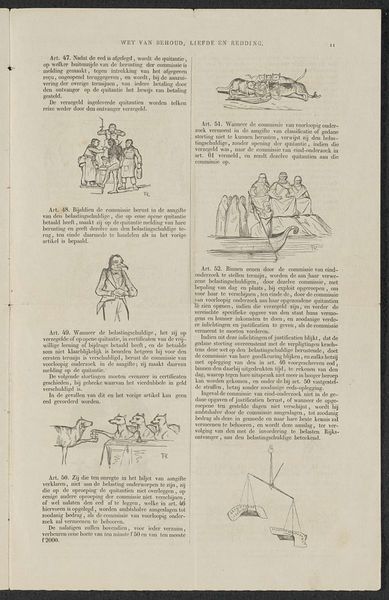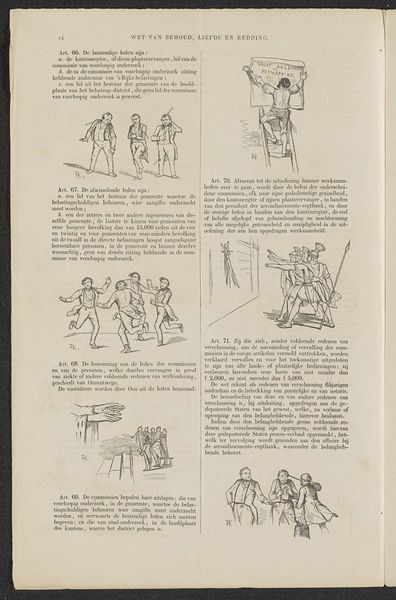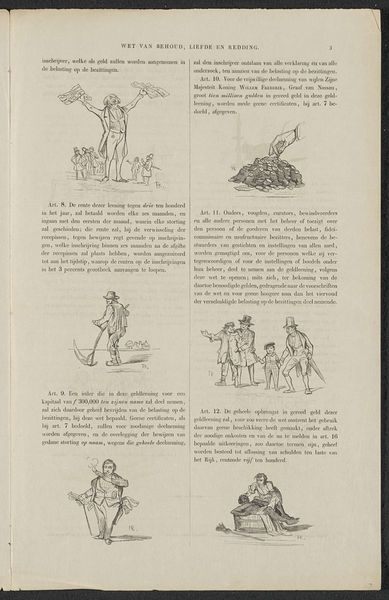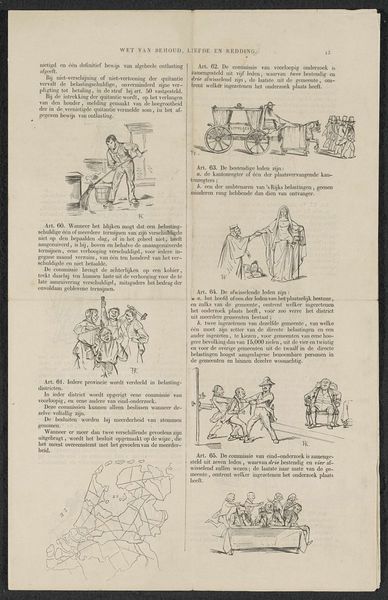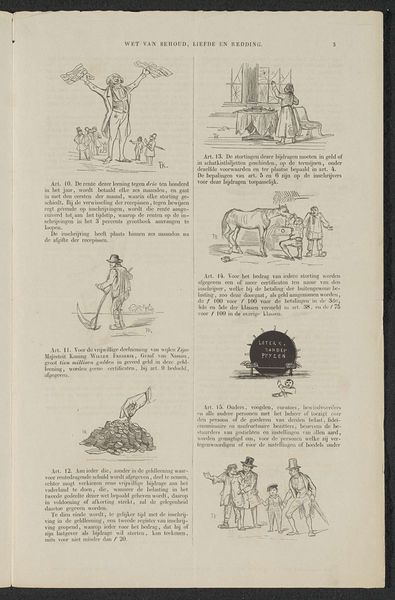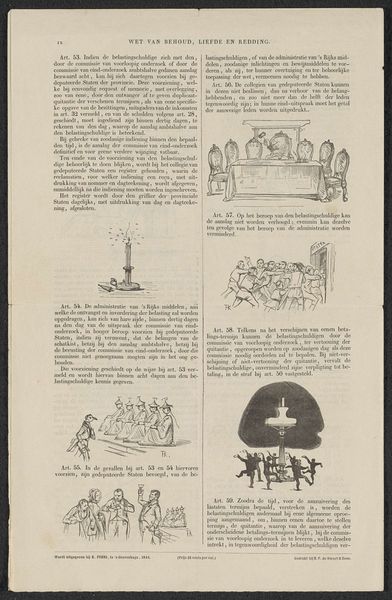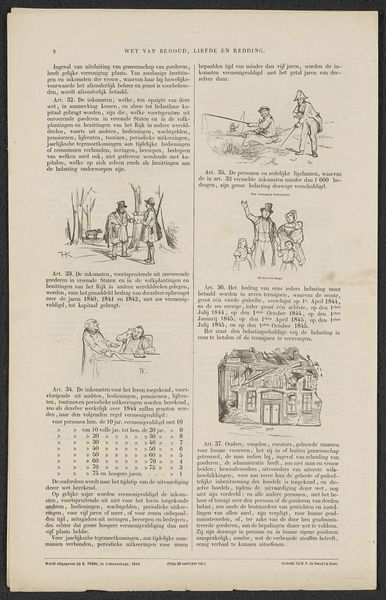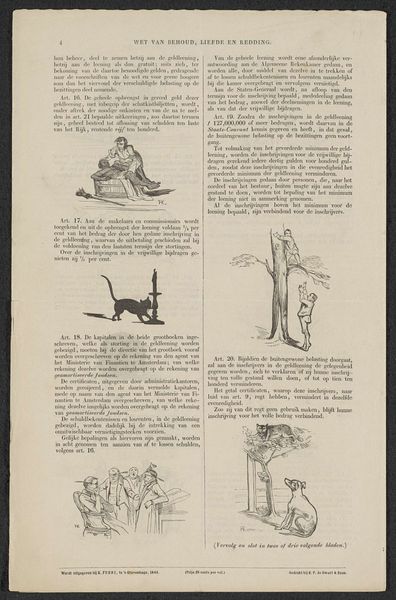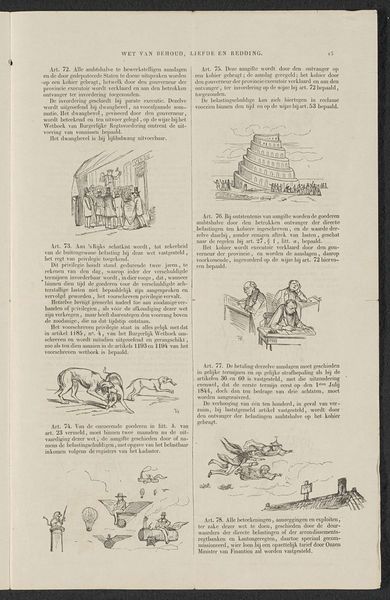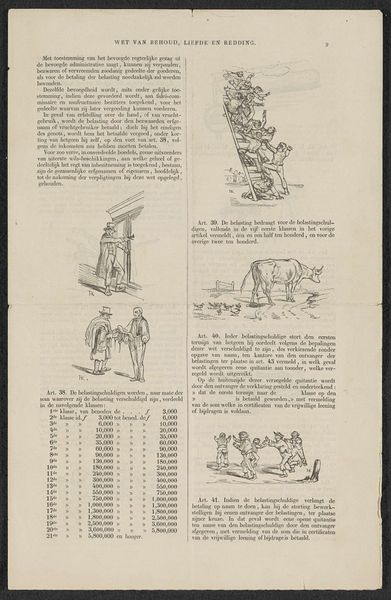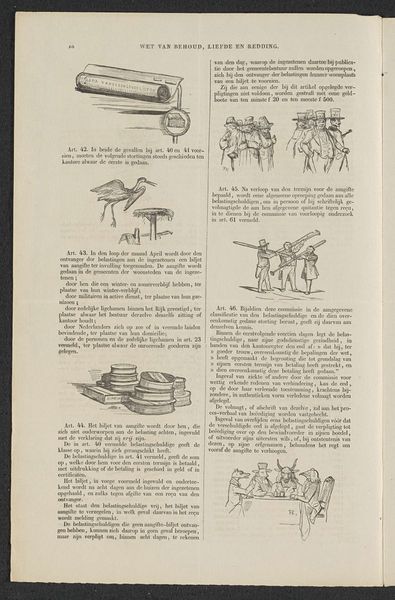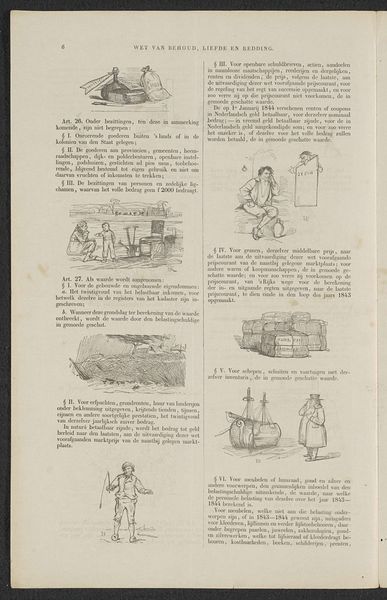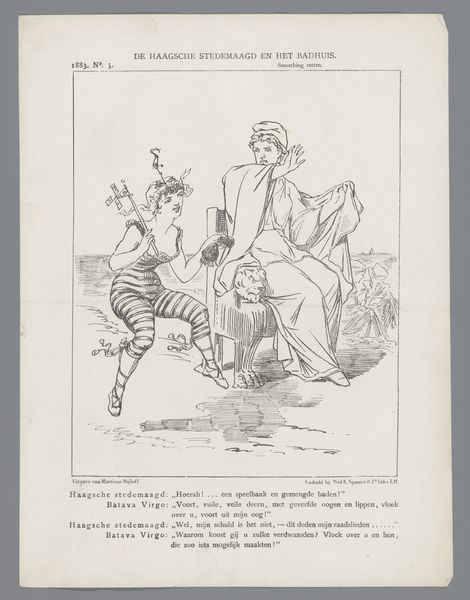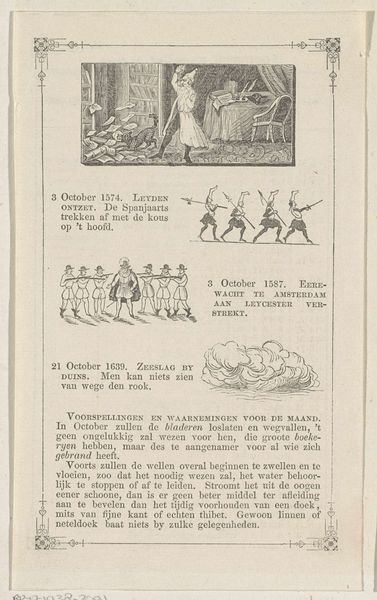
Satire op de aansporing tot deelneming in de (zogenaamde) vrijwillige 3% geldlening van 1844 (blad 16) 1844
0:00
0:00
drawing, ink, pen
#
drawing
#
narrative-art
#
dutch-golden-age
#
ink
#
pen
Dimensions: height 385 mm, width 245 mm
Copyright: Rijks Museum: Open Domain
Editor: Okay, so here we're looking at "Satire op de aansporing tot deelneming in de (zogenaamde) vrijwillige 3% geldlening van 1844 (blad 16)" – quite a mouthful! – created in 1844 by Herman Frederik Carel ten Kate. It’s an ink and pen drawing. I find the composition rather chaotic. There’s a lot happening, almost like different panels on a comic strip, but all crammed onto one page. How do you interpret this work, particularly given its satirical nature? Curator: For me, this drawing prompts questions about production and circulation. It's a print, so we immediately have to consider its reproduction. The lines are efficiently rendered to make it easily reproducible, implying mass consumption. What was the material reality of producing these images in 1844, and who had access to them? The type of paper, the quality of the ink, who made these materials and under what conditions – all point to a wider story of 19th-century Dutch material culture. Editor: So you're saying it's not just *what* is depicted, but the actual process of *making* the artwork that tells us something? The labour that went into its creation and distribution? Curator: Exactly! The very fact that this is a readily reproducible satire aimed at influencing public opinion connects it to specific processes of political and social change. The use of print suggests an intended audience beyond just the wealthy elite. We should also think about the role of printmaking workshops and their impact on social commentary at that time. Was this artist using these readily accessible processes to address concerns and the economic anxieties amongst the general population? Editor: I never considered analyzing it through the lens of its materials and how those materials shaped its distribution and its reach. I’m really shifting my perception of its value from a political document of resistance to also something born of labor and accessibility. Curator: Precisely. Shifting our focus from purely aesthetic or iconographic concerns allows us to explore the drawing's broader historical impact on Dutch society in a much more meaningful way.
Comments
No comments
Be the first to comment and join the conversation on the ultimate creative platform.
